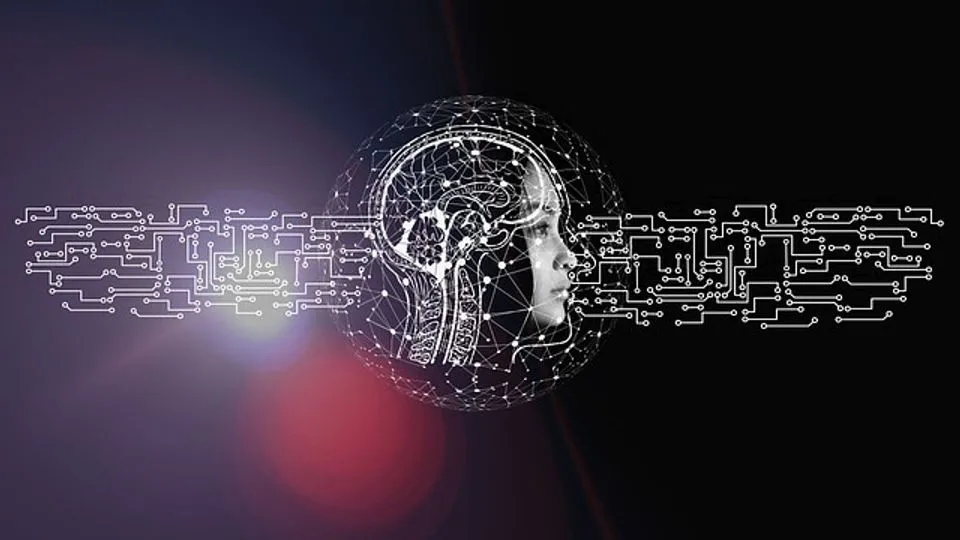A new AI program has the ability to read minds. It enables a computer to simulate your thoughts by observing the brain signals you produce. Additionally, the system can analyze and simulate your ideas. Sounds interesting? Do you know how to change thoughts into images using AI?
Researchers at the University of Helsinki have created a method that lets a computer simulate your thoughts by tracking brain activity. An innovative brain-computer interface has been developed by a team of scientists from the University that can roughly deduce what an individual’s thoughts are and produce an image based on that thought. In this article, we will discuss How to change thoughts into images using AI?
How to change thoughts into images using AI? A new type of computer uses brain imaging to interpret your thoughts and display them to you as pictures. Additionally, the computer is capable of creating visuals from these ideas.
How To Change Thoughts Into Images Using AI? Neuroadaptive Generative Modelling
The person could spell out individual letters or control a cursor using their brain in previous brain-computer connections. However, in this instance, the interaction is between the brain of the individual and the AI that produced the visuals. This approach is known by researchers as neuroadaptive generative modeling. The latest study by these experts was published on September 7 in the journal Scientific Reports.
How To Change Thoughts Into Images Using AI? The Research
Future developments in this sector could significantly improve the quality of life for people with specific disabilities. Brain-computer interfacing has already been created that allows people to type words or move a cursor on a screen using only their thoughts. The capability to interact would be restored in situations where it has been lost if an AI could flawlessly comprehend and broadcast a person’s ideas. Although this dream is still a long way off, Finnish scientists have made progress in that direction.
The group of 31 volunteers watched a series of pictures of human faces while having their electrical brain activity monitored. After that, they were instructed to concentrate on specific characteristics, including smiling or old faces, as their electroencephalogram (EEG) was being sent into a neural network. The computer then used this information to create a picture of the kinds of faces the individual had in mind by recognizing specific activity patterns that appeared whenever they viewed a face that fitted what they had been hoping for. Depending on this knowledge, the interface had an 83 percent success rate in producing fresh pictures of faces that included the pertinent traits. The journal Scientific Reports has provided a thorough account of the experiment.
Study author Tuukka Ruotsalo explained that “if you want to draw or illustrate something but are unable to do so, the computer may help you to achieve your goal. It could just observe the focus of attention and predict what you would like to create.”
Senior Researcher Michiel Spapé said, “The technique does not recognize thoughts but rather responds to the associations we have with mental categories. Thus, while we are not able to find out the identity of a specific ‘old person’ a participant was thinking of, we may gain an understanding of what they associate with old age.”
The study’s authors claim that their own work is important because it demonstrates that a pc can be taught to read subjective thoughts based on an EEG, even though the technology is still in its early stages and can only identify broad concepts in an individual’s thoughts, such as age, color, or if an individual is laughing. They have given their method the name “neuroadaptive generative modeling” and are currently working to advance it in order to create an interface that can understand a person’s more delicate mental processes.
Wrapping Up
Hope, this article sheds light on how to change thoughts into images using AI! We understand that the research work is complicated but fruitful. With the emergence of OpenAI and AI Test Kitchen, we are looking forward to being impressed with more advanced AI available for public testing. Follow Deasilex for more updates on AI.
Frequently Asked Questions
Q1. Can You Turn Thoughts Into Images?
However, it is now possible to visualize your thoughts! A system that converts your brainwaves into photographic images was developed by researchers at Radboud University in the Netherlands. It does so precisely that it’s both unsettling and awe-inspiring in equal measure.
Q2. Can AI Read Our Thoughts?
A computer can read your mind with 83% accuracy by scanning your brain and presenting what you’re thinking about as visuals. A new AI program has the ability to read minds. It enables a computer to simulate your thoughts by observing the brain signals you produce.
Q3. What Is The AI That Makes Pictures From Words?
The AI model NUWA-Infinity, developed by Microsoft, has jumped on the bandwagon and can produce high-quality images and films from any text, image, or video input.
Q4. How Do I Get AI-Generated Images?
To start creating AI images, visit Canva Apps or launch a design template on your desktop, iOS, or Android app. Create a text-based graphic that will help you rapidly visualize a special notion or idea, then include it in any presentation or social media post.
Q5. Can Thoughts Be Visualized?
Although studies have shown that we all produce visual representations when thinking verbally or abstractly, it is generally accepted that two-thirds of people primarily perceive words and thoughts as a succession of pictures.

